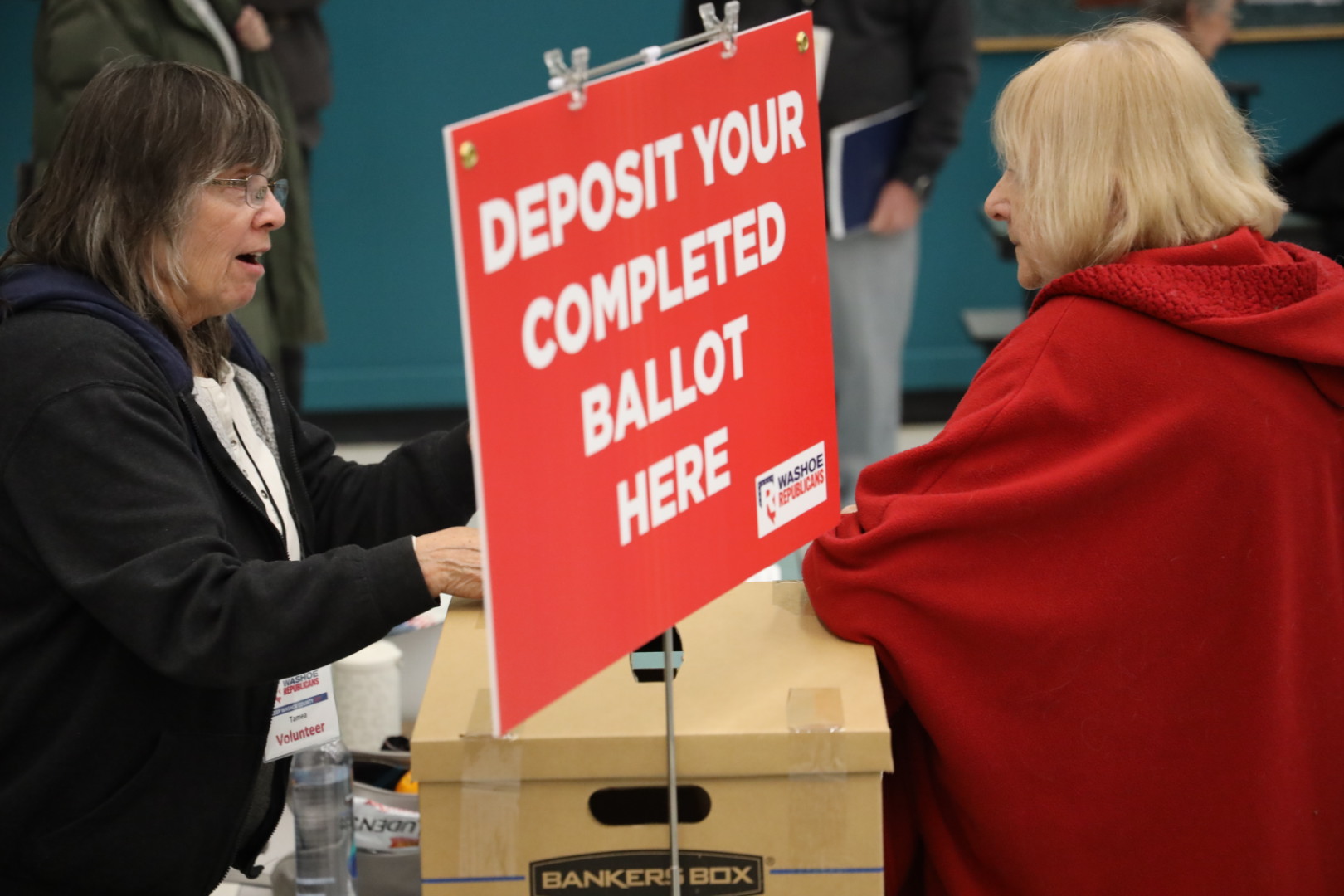How Nevada presidential primary turnout beat caucus records

The results of Nevada’s presidential primaries (and caucus) last week were staggering, albeit unsurprising.
The presumptive nominees scored dominating victories — President Joe Biden won the Democratic primary with more than 89 percent of the vote and former President Donald Trump won the Republican caucus with more than 99 percent. In the only contest that really mattered (yes, putting aside the delegates that Biden and Trump each swept up), former South Carolina Gov. Nikki Haley lost to no one.
One potentially surprising outcome: turnout in the primaries beat all-time records for caucus turnout in Nevada. (The GOP caucus turnout of about 60,000 votes was not a record-setter, despite Trump’s claims to the contrary.)
On the Democratic side, primary turnout reached nearly 135,000, beating the 2008 caucus record of 118,000. On the Republican side, primary turnout surpassed 80,000, topping the 2016 caucus record of 75,000.
Despite the lack of competition, the change to a primary — away from the traditional low-turnout caucus — for the first time in four decades helped boost voting.
Here’s how it happened.
Mail ballots were the main driver
Unlike the party-run caucus, which relied almost exclusively on in-person voting during a short block of time on a Thursday night, the primaries were run by state and local officials following the same election laws that govern other Nevada elections and offer a lengthy window and multiple ways to participate.
Because of a 2021 law establishing universal mail voting, every Nevada voter registered as a Democrat or Republican received a mail ballot. Though voters returned just 15 percent of the 1.1 million mail ballots sent out last month, they were instrumental to the record turnout.
In the GOP primary, nearly 61,000 Republican voters cast ballots by mail that were accepted for counting (officials rejected a small share of mail ballots in each primary for a variety of issues, such as a missing envelope or stray marks). That amount alone exceeded the roughly 60,000 votes cast in the caucus.
In the Democratic primary, the number of mail ballots cast (nearly 108,000) was higher than the number of votes cast in each of the past three caucuses.
There is also some historical evidence from Nevada’s past history of presidential nominating contests to further prove mail ballots’ relationship to turnout. In 1996, Nevada Republicans held a primary — a temporary move away from the caucus — conducted entirely via mail ballots. That contest saw more than 140,000 voters cast ballots, ahead of the records set in each party’s primary this year.
Do the records mean anything?
Yes, the raw totals set records. But it may be difficult to judge how much of that is really a product of voter enthusiasm.
In-person turnout alone was about 27,000 in the Democratic primary and 20,000 in the Republican primary, closer to the abysmally low numbers of the 2012 caucuses than any other point of comparison.
Turnout in this year’s primaries as a percentage of the number of voters was actually lower than in past years. In the previously turnout record-setting 2008 Democratic caucus, about 27 percent of registered Democrats voted, compared with less than 23 percent in this year’s primary. In the 2016 GOP caucus, more than 17 percent of registered Republicans voted, compared with less than 15 percent in this year’s primary. (Editor’s Note: These numbers are based on the latest available data on active registered voters in each party, and may not account for changes leading up to the election such as voters changing party using same-day registration.)
Even with a caucus, where voting required more steps than checking the mail and dropping off an envelope, those were more competitive contests (Trump on the rise in 2016, Barack Obama against Hillary Clinton in 2008), and they garnered more votes from partisan voters at the time.
Are there any takeaways for November?
Partisan observers may be quick to draw general election conclusions from those record numbers or the margin of victory of each contest. The Nevada Democratic Party, for example, described the turnout numbers as proof Democratic voters are ready to deliver Biden a win in November and that enthusiasm for Trump is low.
But recent history shows why such extrapolation is difficult. Democratic and Republican turnout in the 2012 general election was higher than in 2016 and 2020. Despite lower turnout in the caucuses, particularly on the Democratic side where Obama had the nomination locked up on the way to his second term, a higher share of Democrats turned out in November that year than in other recent years.
So remember: Don’t extrapolate these turnout numbers to expect anything particular come November. But one thing is clear from the primary and caucus turnout: Nevadans are increasingly favoring mail ballots as their preferred method of voting.
Editor’s note: This story appears in Indy Elections, The Nevada Independent’s newsletter dedicated to comprehensive coverage of the 2024 elections. Sign up for the newsletter here.
